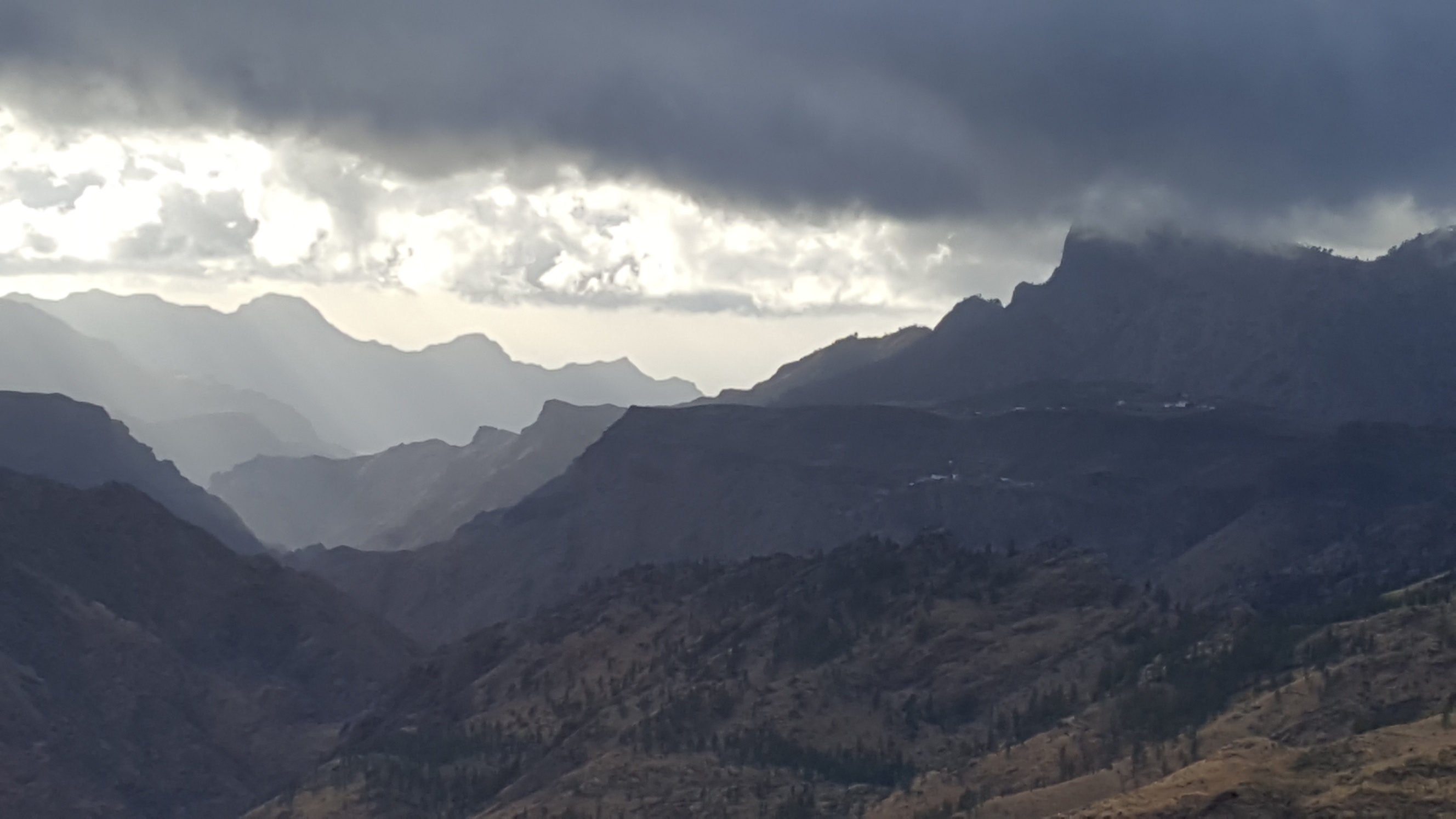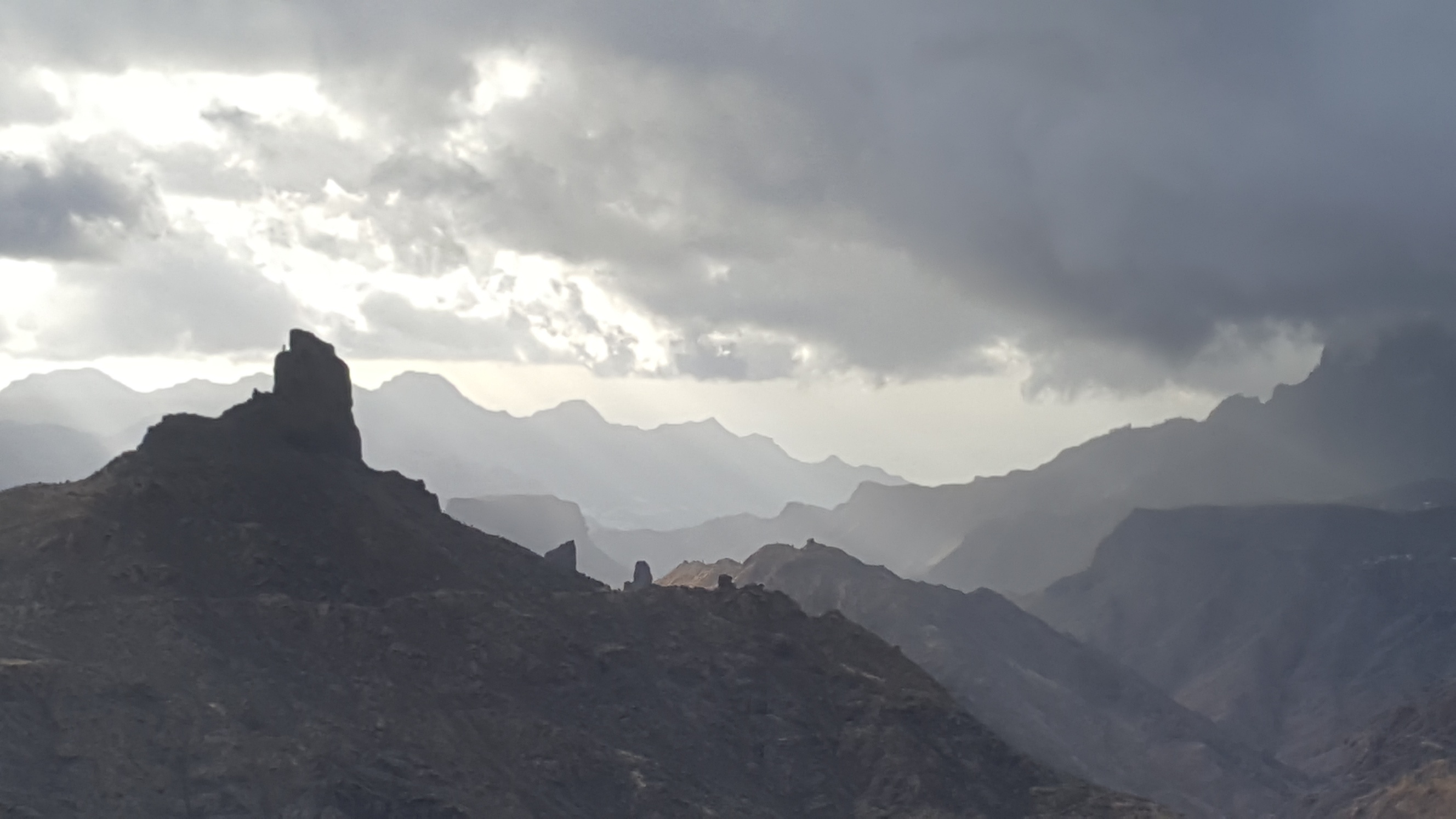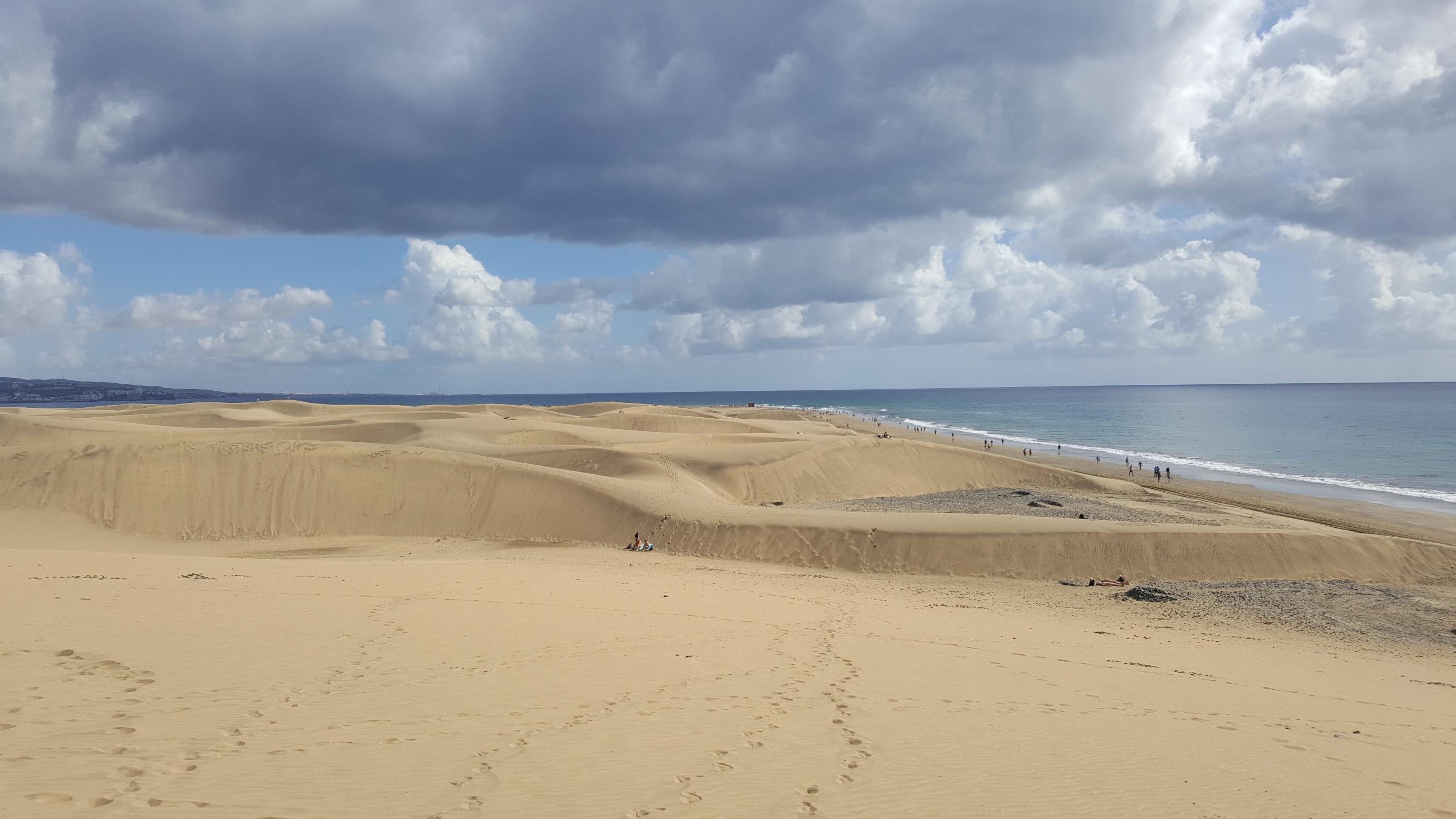Gran Canaria
Key information: Gran Canaria 
- Exciting volcanic Gran Canaria hosts a network of superb trails in its highlands. A walkers’ dream.
- Enormous views over the cliffs, broken barrancos and pine-clad hillsides out to the limitless sea.
Walkopedia rating
(Top 100)
- Walkopedia rating90
- Beauty34
- Natural interest16
- Human interest7
- Charisma33
- Negative points0
- Total rating90
Vital Statistics
- Length: Your choice
- Maximum Altitude: 1,949m
- Level of Difficulty: Variable
WALK SUMMARY
This round-ish island at the heart of the Canaries boasts a wildly eroded mountainous centre where you can walk in wonder for days. It is of course volcanic (then ocean-climate-eroded), so its heart a maze of crazily eroded high ridges packed with strange formations, with craters and other oddities on its flanks. Expect visual treats galore.
Gran Canaria is sometimes called a continent in miniature because of the huge variety of landscapes and eco-systems that are packed into its 40km diameter. As you climb, you pass through a series of vegetation zones, from dune and desert to rock and scrub then lusher montane pine forests.
This variety results in a plethora of superb trails in the centre and its western and southern flanks.
The high centre
The mountains in the high centre of the island are an impenetrable, confusing maze, with steep, broken ridges emanating from them. The best walks are generally in their heart and on their southern and western flanks.
The best way to orientate is perhaps to start with the high central ridge linking Roque Nublo and Pico de las Nieves, the island's high point at 1,949m, and running on eastward from there.
You can walk this entire ridge from La Culata below Roque Nublo to any number of eastern roadheads, taking in Roque Nublo and Pico de las Nieves, in a long and at times demanding 15km upward. Most people focus on particular sections. You can access the high ridge up a spectacular old mule track from Cruz Grande to the south, and from the GC600 road to the north.
Pico las Nieves sits astride the long, high ridge at the heart of the island, with beautiful open pine forests to its north and grand cliffs and vast views to its south. It can be approached by a variety of superb routes, the most-used being from its west and north.
Roque Nublo: the most famous landmark in Gran Canaria is a huge, thrilling tower on a hilltop between Tejeda and Ayacata. It can be approached from various directions, including from the pass at La Galeta, but the most enjoyable approach must be the longer walk from Cruz Grande to the south-east of the high ridge, approaching across the dramatic El Montanon.
From the above, you can see that the magnificent old mule track up the cliffs above Cruz Grande gives you access to several high options (including a south-north crossing to Cruz de Tejeda), as well as being a hugely worthwhile walk in its own right.
Finally, there is the 20km walk northwards from Cruz de Tejeda to Guia, winding exciting high ridges and ending up much lower at Guia, taking in fine forest and a superb crater en route. A Walkopedia regret to have missed this.
Westish high ground
Attractive (if slightly antiseptically done up) Artenara perched on a high ridge to the north-west is a good walking base.
The ridge to the high viewpoint at Altavista is a marvel.
Cruz de Tejeda to Artenara: this moderate (10km) thriller winds along the southern rim of the long, gradually declining Moriscos ridge. You will need to take a bus back, or you can turn back at whatever point on the ridge will make the right length of return walk - you won't get bored!
South-west
Inagua Massif: the strenuous 18km+ circuit around this massif in the island's south-west is in Walkopedia's view the finest on Gran Canaria. And that is saying something. Inagua is a long, thin, flattish-topped mountain whose remarkable south-western face consists of a series of cliffs with steeply sloping terraces between them. They look impossible to climb from below. Walking heaven. A final minor summit out to the west is Monte Viso (997m), which masochists could climb from La Aldea far below.
El Juncal – Aldea: you can incorporate Inagua into a very long (32km) but varied, exciting and beautiful walk from El Juncal in the east of the high ridge which ends at Inagua and Mt Viso, finishing with a steep descent to the town of La Aldea. Much of the walk is spent on forest tracks. A long, linear route, so you will need to arrange transport.
You can make some other exciting walks on the complex of ridges to the south-east of Inagua, and east above the attractive valley town of Mogan. This includes the superb Guirre ridge above Mogan and an exciting high ridge between Cruz Grande and Chira to its south-west, which you can make into a satisfying circuit or extend on to Soria and further west.
SW coastal range
The steep and jagged range right on the south-west coast provides a wonderful rough and remote 17km walk between Albercon and Tasartico, via the beach at Guigui. This would be on Walkopedia's list if we get back. Those who are transport challenged could do still-satisfying there-and-backs.
Ravines
The Sunflower Guide has ideas for walking deep in the great barrancos which radiate out from the island’s high central massif.
Easy to moderate walks on lower slopes
The Maspalomas dunes on the far south coast are an intriguing and surprising thousand-acre complex which are well worth a couple of hours' exploration when you want a gentler day, despite being next to major resorts and well populated by the walking semi-naked.
The path round the rim of the Bandama caldera (collapsed crater) above the east coast is an unforgettable.
________________________________
This can be demanding walking in serious and waterless mountains: prepare.
THE book on walking here is Cicerone's Walking in the Canary Islands: 2 East, which has 20 well-selected walks including many of those here – and some other easier ones. If we have one criticism, it would be there it has few circular walks, in an island where linking walk ends is not always easy.
________________________________
An example of a possible itinerary (and demonstration of the need for flexibility to cope with possible weather changes), based on Walkopedia’s own journey, would be:
Day 1: Open your lungs and stretch those legs walking from Cruz Grande Roque Nublo.
Day 2: The Altavista ridge.
Day 3: Take it relatively easy with a gentler walk and maybe a good lunch and a relax by the sea.
Day 4: Amazing Inagua.
Day 5: Pico de las Nieves to take the high point for your curtain bow.
Other accounts: share your experiences
Your comments on this walk, your experiences and suggestions, and your photos are very welcome. Where appropriate, you will be credited for your contribution.

We have a lot of helpful practical information and tips about this walk, covering everything from the best books and maps, to timing and weather, geting there, possible problems, whether you need a guide and where to find them, and useful websites. This section is only open to members.
Membership is FREE AND JOINING TAKES 30 SECONDS. To login or sign up click here
Safety and problems: All walks have inherent risks and potential problems, and many of the walks featured on this website involve significant risks, dangers and problems. Problems of any sort can arise on any walk. This website does not purport to identify any (or all) actual or potential risks, dangers and problems that may relate to any particular walk.
Any person who is considering undertaking this walk should do careful research and make their own assessment of the risks, dangers and possible problems involved. They should also go to “Important information” for further important information.
Anyone planning an expedition to this place should see further important information about this walk.
Safety and problems: All walks have inherent risks and potential problems, and many of the walks featured on this website involve significant risks, dangers and problems. Problems of any sort can arise on any walk. This website does not purport to identify any (or all) actual or potential risks, dangers and problems that may relate to any particular walk.
Any person who is considering undertaking this walk should do careful research and make their own assessment of the risks, dangers and possible problems involved. They should also go to “Important information” for further important information.
OTHER ACCOUNTS
share your experiences
Add your experiences, suggestions and photos. We would be delighted to receive your writing and ideas (which will be attributed appropriately where published).
Anyone planning an expedition to this place should see further important information about this walk.

Responsible travel matters, a lot. How you travel will make a real difference - for better or worse. PLEASE consider this when making plans. Read more







